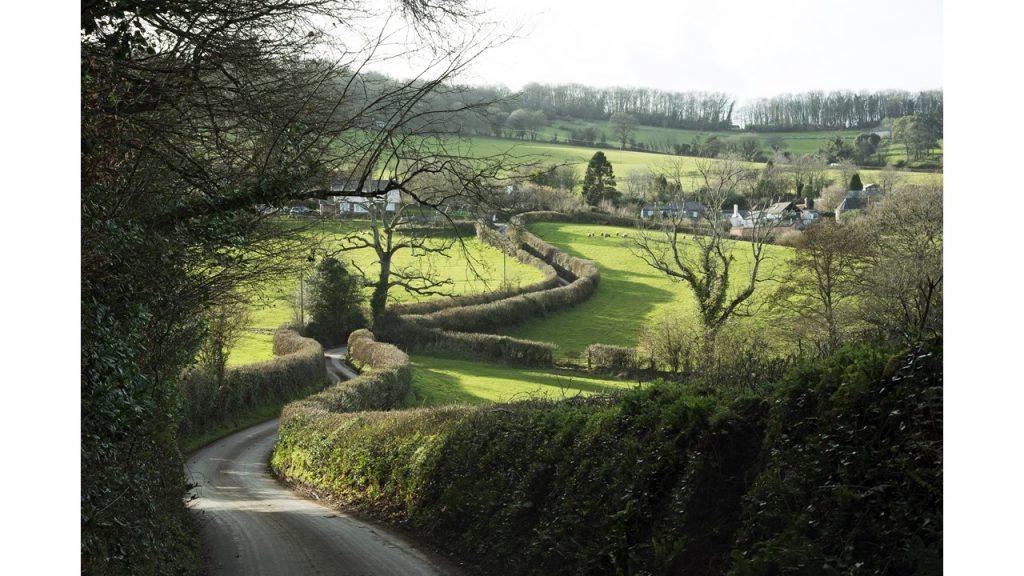
From script by Lou Cripps
Infrastructure schemes tend to suffer from optimism bias: assuming everything will work as planned.
Focusing on benefits and forgetting some costs is one reason infrastructure projects tend not to be as good as their business cases.
But there’s a parallel problem with risk and time.
Hofstadter’s Law: It always takes longer than you expect, even when you take into account Hofstadter’s Law.*
The UK TV programme Grand Designs comes to mind in relation to projects. It doesn’t seem to matter how many years the programme has been running, or the presumption that people who appear on it will have actually watched previous episodes.
In ambitious projects for houses, there seems to be a McCloud Law at work. People will always plan to be in by Christmas, unless they are expecting a baby (in which case they want to be in just before it is born).
In the UK, that means they are probably rushing to weatherproof the house in November, so they can get to work on the interior. And this in turn means they are invariably dependent on it not raining until the roof and windows are installed.
So the question is, is it likely to rain in the UK in November?
There is a technical corollary to this: that the glass for the windows will be delivered late, in any case. Apparently all builders know this.
*Coined by Douglas Hofstadter in his book Gödel, Escher, Bach: An Eternal Golden Braid (1979). McCloud after Grand Designs’ presenter Kevin McCloud.

44169003 © Shea R Oliver | Dreamstime.com
Regulation can be an admission of failure – failure of a sector to do what it should do.
And the realisation that many organisations only take Asset Management seriously because some branch of government tells them they must can seem like our failure, failure to convince them AM is for their own benefit.
And some stop doing it when they are no longer pushed…
What incentivises someone in a position of some power in a public agency to do the right thing? More particularly, what encourages them to think longer term?
CEOs and other senior managers have several kinds of short-term incentives: personal annual targets and maybe bonuses. Local politicians with their own short-term ambitions for re-election. Immediate approval or disapproval from their communities.
Public-sector managers can pick up assumptions about their careers from the private sector. Moving onward and upward by moving organisations – or moving on before anything catches up with you.
On the other hand, whatever their views on their own careers, people in government regulations are normally set the objective of improving the efficiency and effectiveness of what they are regulating over time.
Of course there are poor regulations, and poor regulators. One urgent concern is governments depriving regulators of teeth and funding to enforce the regulations – the UK Environmental Agency’s ability to enforce the law on sewage releases into rivers, for example.
But overall, their incentives are far more aligned to longer-term Asset Management than the average manager. They realise they can’t change things overnight, that it’s about processes and competences and a longer-term perspective. The regulators I have known are generally firm, but patient. They know they have to be.
Infrastructure is too important to be left to ambitious executives alone.
Are we working closely enough with the regulators?

Among my personal highs and lows of 2024, the standout experience was going to Japan.
I am sorry to say I have never encountered a Japanese Asset Manager, but thanks to GFMAM I got to hear a rep from the Japanese maintenance societies at the IAM UK conference in London last month.
Despite what we hear about its economy, the country is still doing very well on total maintenance and quality in manufacturing. Some days it seems every other car on our roads is a Toyota.
And my overriding sense of Japan? That along with the incredible food and gardens and manufacturing, it’s simply the most sensible society I have ever seen.
Starting with the toilets at Tokyo airport when we arrived.
I have long suspected the most important thing about Asset Management is that it is sensible. Don’t spend where you don’t need to, but do what you must to sustain what we need to thrive. Don’t preach growth for its own sake, and be wary of ‘innovation’ (think of ‘the Maintainers’ and their 2020 book The Innovation Delusion*). What does the evidence tell us? What risks are we really running with our assets? Cut through the lobbying and classical economics – and make sensible decisions.
Sensible is not necessarily glamorous; AM is not glamorous. It doesn’t pander to fantasies, of engineering or entrepreneurs.
As several Western countries seem to lose the plot, even caught up in what can only be described as fascist dreams, it was wonderful to experience somewhere that has a much stronger sense of its limits. A lot of people in a limited space, and some of that physical space quite dodgy: how can we organise food, rub along with millions of strangers without pulling guns on each other, love nature (trees!), create beautiful things? Value education, and don’t take our gods too seriously.
Take what we need, and reject what we don’t.
Yes, I am hopelessly romantic about Japan, ever since my father worked there when I was a child. But I didn’t expect to come away with sensible.
PS not sure I will ever be happy with cold toilet seats again.
* The Innovation Delusion: How Our Obsession with the New Has Disrupted the Work That Matters Most
Note: Japan, like many countries including the UK, USA, China and France, not to mention Germany and Russia, has some dismal history. Unlike some of those countries, it appears to be able to learn from its past, but this is not to excuse its treatment of Korea and China and prisoners of war in the past.
What does perfect Asset Management look like? What’s at the top of the mountain we’re climbing?
And what’s a metaphor between friends?

But to some of us it’s more a windy, winding road, over yet more hills, where we sometimes see part of the road up ahead, but never glimpse the end.
Why does this matter? Having recently faced a virtual room full of people saying they would know what to do next, if only someone could describe the end state for them: as though Asset Management is an accomplishment, something you can complete. Done, checklist all checked, and move on?
In contrast, is there a destination for, say, engineering? Although many engineers may not examine what they believe, they surely think of engineering more as a state of mind, a way of thinking, rather than something that gets finished. (And who even has a vision of HR?)
We could describe the top of our mountain as the point where everyone takes it for granted that we think longer term, whole system and lifecycle, use information wisely, and truly embrace uncertainty.
But I don’t think that’s what the metaphor betrays. I think it’s more ‘when we have a complete asset inventory and a strategy for every class’ and can stop thinking about them and move onto something more fun. The way some, at least, appear to think a check the box approach to ISO 55000 is what we need, or even the point.
But, you know, it’s also whether fun to us means continual discovery, the thrill of not knowing and then learning – or getting back to my desk to fill something in.
Roll on, rolling road!

We have to be more efficient, do more with less! Why?
It has been of increasing concern to me that we seem to be focussing on efficiency without having the right steps in place for effectiveness. Why, I asked myself was this happening? The answer I came up with – which you may not agree with – is that it is relatively easy if you are the Commonwealth or State Government or a Head Office, to focus on policies that impose efficiency on others. Effectiveness, however, requires each of us to make changes of our own – much harder!
Thinking along these lines I issued a challenge to the asset managers taking part in the History Forum at the time, I asked “ Is Asset Management still fun? Or has our concern for efficiency (doing the same with fewer resources) driven out our interest in effectiveness (doing better by doing differently)?
I was thinking of effectiveness as getting the right assets in place, in other words, capital optimisation (which I still think we do rather badly) rather than maintenance optimisation (which I think we do rather well). But John Hardwick saw another aspect to effectiveness. He saw the necessity to get the right culture and information infrastructure in place. Both logically pre-date a focus on efficiency. Here is John’s comment, which is worth thinking about.
“Well, I can’t miss the opportunity to comment on this one. I don’t know how you pick your topics but this one is great. I think the doing more with less can only really become successful if you have already put the building blocks in place, set up the right culture and created the IT systems to gather the information for decision making. This creates the effective part of the story but how do you then deal with efficiency? Well, for me there are two options. One you can take on more risk. At least if your Asset Management is working you can articulate the change in risk. The other option is to look at your people and process to understand if this is optimum. What interested me the most with this topic Penny is you must be in sync with our company. I have just been moved from the strategic area of our company to managing about 700 people delivering outcomes. Interestingly i am still the business process owner for Asset Management. I am sure there are going to be some real challenges in this move. The funny part is this means I am more excited then ever. New challenges, new people to influence, more people to become part of the Asset Management community if i get it right. If it does not excite you then get out of the field and do something else.”
Amen!
Your thoughts?
Do you know where are good examples that illustrate improvements in AM effectiveness (either capital optimisation or organisational culture)?

Today the pressure is on to measure and track our performance with KPIs, but it is important that we measure the right things. The following story is from 30 years ago but the message still applies.
I had only just joined the water agency in South Australia as a policy analyst, when a complete stranger turned up, not at my office but at my home, and presented me with a dirty scrap of t-shirt material. “There!”, he said angrily, “that’s what happens when I put that under my tap. What are you going to do about it?” I was mystified how he knew where I worked, and even more mystified about what I was expected to do.
A month later there he was again, with another piece of muddy t-shirt. This time I decided to find out from our water quality section just what was going on. It turned out that as most of our water comes from the River Murray and we are at the tail end of the river, there was a great deal of sediment that was carried along with the water. The practice at that time was to thoroughly flush out the pipes once a month to keep the water at a good quality. After flushing, the water was relatively clear and free of sediment, but for those few hours the water flowed like gravy!
Now, the authority’s water statistics told the engineers that they provided relatively clear water 99.5% of the time, which was held to be a pretty good service. But anyone who put through a load of white washing at the time of the flushing probably thought it an exceedingly poor service. Who was right?
After speaking with the water quality team about my visits from the t-shirt man, they decided that it would be a good thing to at least let people know about the flushing program and when it was going to take place so that they could avoid using the taps at that time.
Later, they were able to find ways of avoiding the flushing problems and still provide a reasonably good quality of water.
But neither of these two actions were taken until the water quality team started thinking about the problem from the perspective of the user! The KPI’s told them they were doing a good job.
Your thoughts and experience? Are your KPIs giving you the right information?

An Asset Management friend recently emailed me that her CEO had challenged her view of the importance of AM to their whole business strategy. “So asset management is improving our passenger experience? Asset management is improving employee engagement? Asset management cures cancer?”
While, on the other hand, even plenty of people with ‘Asset Manager’ in their job title act like their job is to manage the list of assets in an IT system.
ISO 55000 makes bold claims, that I think it cannot substantiate. That the same principles we apply to managing physical assets hold true to managing anything else of value, like financial assets, or people. I suspect that the good folks who wrote ISO 55000 may have no idea what that even means – or, put it this way, would you necessarily go to an engineer to tell you how to manage people?
So I do in practice think there’s a limit.
However, managing physical assets clearly is a huge part of running an asset-intensive organisation such as transit or power, or even a city. It’s certainly most of their budget and resources. If you can get that right, many good things should follow, like profit, customer service and, yes, engaged workforce.
But perhaps the real point is that to manage the physical assets well, you have to think about profit, customer service, and engaged workers.
To me, it’s obvious that it matters – it matters hugely that we do manage our essential infrastructure well, that not merely our economy but quality of life and planetary health depend on it. So we need a wider vision, an understanding of interconnections and dependencies, ‘the bigger picture’.
Asset management will not cure cancer. It has boundaries.
But managing the physical assets that underpin our society effectively is probably wide enough scope to be getting on with, don’t you think?

Dreamstime.com/ 38357225 © Bogdancaraman
One thing that puzzles me in the world is the desire of many to be more excited by what technology could do to emulate people than about people themselves. Why are Asset Management conferences packed with papers about data, and usually silent about what human beings bring to decision-making?
Even those who should know better (because they have been there) talk about ‘data-driven’ processes; and organisations pour far more money into dumb databases than getting a better understanding of their assets.
I suspect this is partly the fetish for capital over on-going costs – and, frankly, ideological faith that it’s better to invest in ‘innovation’ than labour costs. Anything that promises to cut staff is good, no matter how much it costs to try to replace them.
Now, I am a big sci-fi fan, which generally accepts the forward march of technology. But then again, it also warns about how it can wrong, at least in the stories I read. I am not at all sure replacing people with robots benefits anyone, and not the 99% of us that don’t control how automation is used. I am not especially optimistic.
However, there is one thing I am pretty certain about, even in embracing uncertainty about the future: no-one really has any clue about how we can replace experience in managing physical assets.
I remember when I first noticed that investment in things like work management systems, or even more basic computerised processes, could lose sight of how things really work. Big IT in the 1990s in asset-world was sold as replacing some administration costs – mostly part time, middle aged women, who cost almost nothing as they were paid very little, who managed the monthly reporting, knew where the data was, what it meant to asset decision makers, and what to do with it. And the local nerds who programmed in Fortran in their spare time, and wrote routines for their next door colleagues to do any analysis or maths required.
At least we might try to learn the lessons from the history of IT: where did it work, and why?
Which, to me, includes the question of how to think of technology as a tool to assist skilled people. Why would we even want to see ourselves replaced?

Popularity can be the death of a good idea.
Make a term, or an idea, popular and any number of people will latch onto it and attach it to their own agenda – and it doesn’t matter if their agenda is diametrically opposed to yours. In fact, it might serve them better if it is.
For example, I have seen instances of the term ‘asset management’ taken over by developers, applied to office cleaning, and, of course, to maintenance itself. The one I really objected to was the developers. Figuring that their own term had come into disrepute this particular group had decided to take ours!
We see what we want to see
Another problem with communication of ideas is that we tend to see what we want to see.
Years ago the Public Accounts Committee produced a report showing how much would need to be spent on hospital infrastructure renewal IF nothing was done by way of better maintenance, accounting and planning practices (ie without better asset management). A few days later the Minister for Health, completely ignoring the intent of the ‘if’ statement (as people are sadly inclined to do) profusely thanked the PAC Chairman since this ‘proved’ he needed a larger budget!
On another occasion, I was walking in the city when the State Treasurer dashed across a busy main road to tell me enthusiastically that it was thanks to me that the State had kept its triple A credit rating! What?! I had looked at our asset base and saw a future renewal problem that threatened to dwarf the state’s budget, however the credit agencies had looked at the dollar value of our assets – which we had made visible for the first time – and, ignoring the budgetary impact of restoring the deterioration that had already occurred and would need to be attended to, saw only billions of dollars in assets. We are all subject to this restricted vision. We see what we want to see.
All of this is by way of saying that the term I used almost 30 years ago for accounting for infrastructure has long since been hijacked, and by so many, that it is unwise to continue using it. So, I want to start again with greater neutrality.
The Goal
First: let us be clear about the task – namely to develop financial metrics that drive good infrastructure management and meet the need for financial responsibility and accountability. This requires genuine dialogue between two disciplines – and a listening ear.
Let’s start with a thought experiment
There may be lots of things you like about the current way in which we account for infrastructure, but what don’t you like? Are there problems that it creates for you or your organisation?
What’s your story?

Any maintenance or asset manager knows that the longevity of assets is critically dependent on how well they are maintained. And you don’t have to be a maintenance manager to know that your car needs regular servicing. It is kind of obvious! Yet, when it comes to the important public infrastructure on which we all depend, maintenance is considered dispensable and is the first to be cut in times of financial stringency.
It is all to do with how we account for infrastructure assets. Below is the problem – and how we can overcome it using your asset management plan and condition based depreciation (CBD).
The Problem
It pays to know a little history. When government departments and agencies adopted accrual accounting practices and had to bring infrastructure assets to account for the first time, (In Australia, from 1989) naturally they turned to the private sector, where this had been the practice for many years. And this is where the first problem arose since private sector assets such as plant and machinery are depreciated over their predetermined lifespan until they reach zero or some predetermned salvage value and then they are completely replaced.
Infrastructure assets are different. This does not happen with infrastructure assets which can be kept in service for an indefinite time by piecemeal, if somewhat lumpy, component renewal. What is the age of an asset which may have some components 100 years old and others that were renewed yesterday? What is the life of an asset that can be kept in service as long as you want it to? These are unanswerable questions. They go to the heart of the difference between infrastructure and non-infrastructure assets and require a different accounting approach.
However when infrastructure assets were first brought to account, there was no alternative accounting approach for infrastructure assets, so rather than account for the entire infrastructure system, it was decided to assign each component a definite life and depreciate it as if it were an independent asset. It seemed a practical solution to a difficult problem. But in the process it completely ignored the key characteristic of infrastructure assets which is the interdependence of the components, where the life of a component, and thus the need to renew, is dependent on the other components with which it interacts. In other words, the life of components is indefinite, as is the life of the system as a whole. This does not mean infinite! It just means that you cannot define a life of a component until it reaches the stage of renewal. So depreciation in this case doesn’t work.
You will also notice something else about this approach. The economic life of any asset, as we stated at the beginning, depends on how well it is maintained, and yet maintenance does not feature in this accounting process. This is what makes it so easy for organisations to cut maintenance, since cutting maintenance does not affect the life of the asset, at least not in the accounting system – only in the real world!
The Solution
We need a better system, one that takes equal account of maintenance (minor and major) and renewal, i.e.everything that we need to spend to maintain the functionality of the asset. (In practice ‘maintenance’ and ‘renewal’ are really just different points on a continuum.)
Why do we depreciate assets at all? It is so that we can represent reduction in asset value in any particular period (asset value = its store of future services)
Is there a better way of doing this that recognises the distinct character of infrastructure assets? There is! What better way can there be of valuing the using up of asset services than the cost of making it good again? This is what is called Condition Based Depreciation (CBD). And it is available to any organisation that has a sound, and audited, AM plan as a costless spinoff. Put simply, the condition assessment of your assets that tells you what you need to spend over the planning period to maintain service function and that is in your AM Plan. It covers maintenance, minor and major and renewal and is the cost of making good the consumption of the asset over that period. You choose your planning period and it is updated on a rolling annual basis. The cost of ‘making good’ over the planning period is then expressed as an annuity to give you an annual cost and is the best estimate of real depreciation.
Second history lesson: When the UK water industry was being privatised in the early 1980s the argument was put forward that their assets should not be depreciated because the assets were continously maintained. This was rightly rejected by the accounting profession who said, in effect, ‘prove it’ and that is what a sound, audited AM plan does. Unfortunately some do not recognise the distinction between this and the AM plan backed CBD.
CBD was introduced in 1993 and has been well received by maintenance and asset managers and by practising accountants. It was adopted by the NSW Roads authority and by about a half of NZ’s councils for about ten years (until their accounting society called a halt). It is even provided as the ‘modified’ approach in GASB 34, the standard that introduced accrual accounting into the USA in 1999 but it was rejected by the Accounting Standards Board in 2004 and nothing much happened for the next 13-14 years!
Now it is back into contention because of problems with asset valuation giving depreciation figures that are artificially high and causing councils to be deemed non-viable. These councils are now scrambling to make cuts to their budget, eliminating services and sacking staff – and all at a time of Covid 19! So fictional figures are giving rise to real – and negative – physical effects. We can do better, much better!
Would CBD help bring your maintenance to the fore?
Extra references on CBD
Condition based depreciation for infrastructure assets, 1993
Depreciation of infrastructure assets
Condition based depreciation – the questions
- Extra information is provided here.
- Ask any questions you like and I will answer all of them.

Recent Comments